A Comprehensive Guide to Krugerrands, from History to Investment Strategies
27/12/2023Daniel Fisher
Free & fully insured UK Delivery. Learn more
Secure & flexible payments. Learn more

Buyback Guarantee Learn more
Possibly the world’s best-known coin, the Krugerrand is a timeless symbol of wealth and a cornerstone in the realm of precious metals. Since their debut in 1967, these gold coins have etched their legacy in the pages of numismatic history. Crafted with precision and faithful quality, Krugerrands stand as a testament to South Africa’s rich heritage and economic prowess.
In this guide, we’ll track this renowned bullion coin from its inception through to taking the world of precious metals by storm. We explore the artistry, history, and marketing genius encapsulated within these remarkable coins, which has proved so popular with investors and seasoned collectors alike. Delving into the finer details, we demystify the world of Krugerrands and discover why they continue to capture the fascination of enthusiasts worldwide.
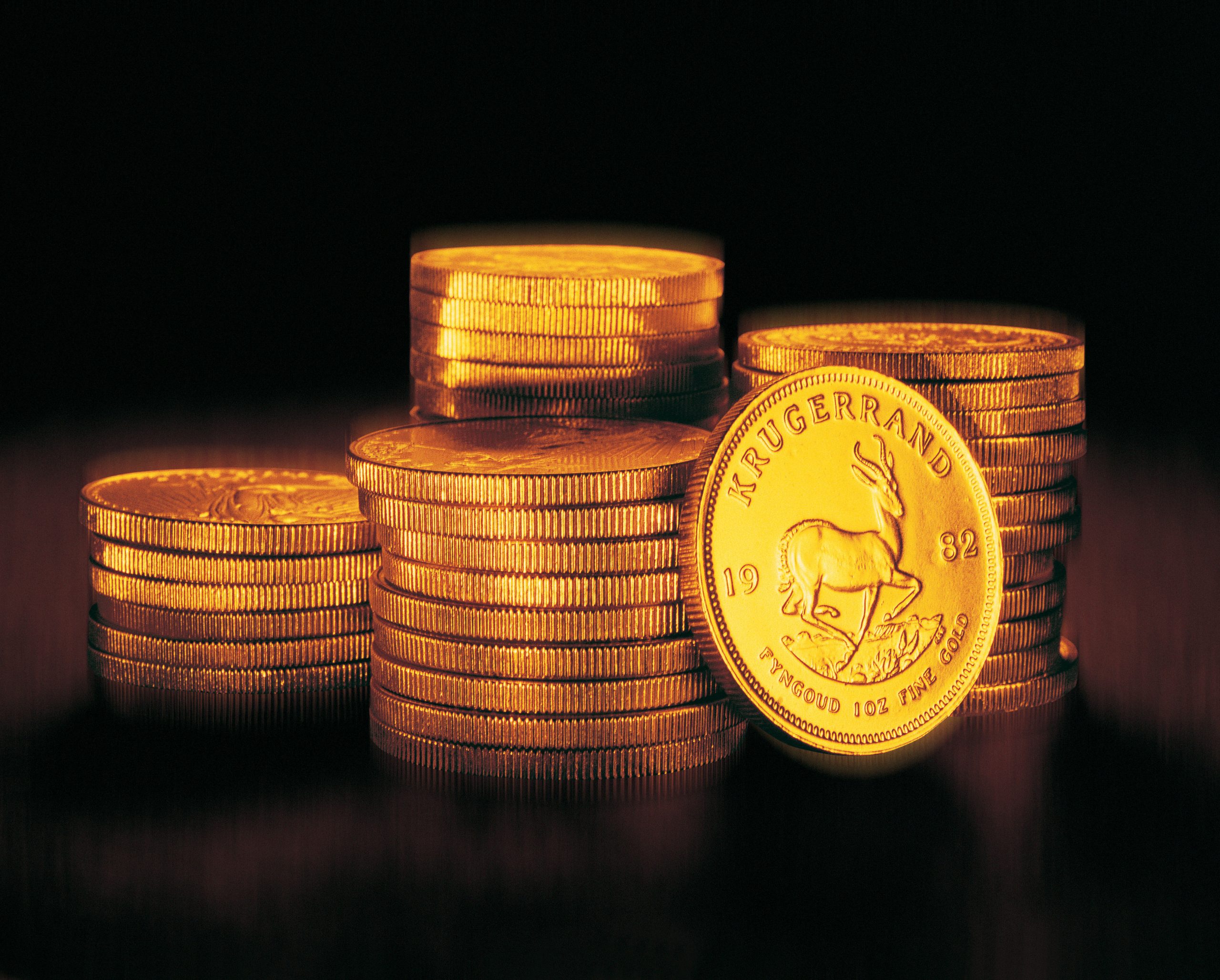
i. History of Krugerrands
ii. Understanding Krugerrand Designs
iii. Types of Krugerrands
iv. Technical Information and Specifications
v. Mintage Figures and Dates
vi. Silver Krugerrands
vii. Investing in Krugerrands
viii. Authenticating Krugerrands
ix. Buying and Selling Krugerrands
x. Storing and Caring for Krugerrands
xi. FAQs
In 1967, Krugerrands made a groundbreaking entrance into the world of precious metals as the first gold coin to precisely contain one ounce of gold. This strategic move wasn’t just a technical feat; it was marketing genius. The simplicity of a 1-ounce gold coin made it accessible and easily understood by consumers, setting Krugerrands apart in a market that was traditionally more complex. The most obvious contrast is with the world’s other best-known coin – the UK Sovereign, which contains a confusing 0.2354 of an ounce of gold.
The historical context of this introduction is crucial. During the late 1960s, South Africa, a significant gold producer, faced economic challenges due to political and social issues. The introduction of Krugerrands served a dual purpose – it not only showcased South Africa’s rich gold resources but also provided a vehicle for private ownership of gold during a time when many countries restricted private gold ownership. This helped enhance the country’s standing and cement its innovative reputation on the world stage.
Krugerrands hold legal tender status in South Africa, facilitating their import into numerous countries without incurring import taxes, duty, or VAT. Notably, during the Kruger’s inception, acquiring bullion gold coins was legally restricted for British residents. As a result, the Krugerrand remained largely unfamiliar in Britain until 1971. In essence, Krugerrands democratized gold ownership, making this precious metal more accessible to individuals. This revolutionary approach in both design and purpose set the stage for Krugerrands to become a global icon in the world of gold investment and collection.
The Krugerrand’s distinctiveness lies in its iconic designs featured on both the obverse and reverse sides. On the obverse, you’ll find the depiction of Paul Kruger, a prominent figure in South African history, while the reverse showcases a springbok, a national symbol of the country. These straightforward and symbolic designs contribute to the Krugerrand’s timeless appeal, with their consistency the key to the coin’s familiarity.
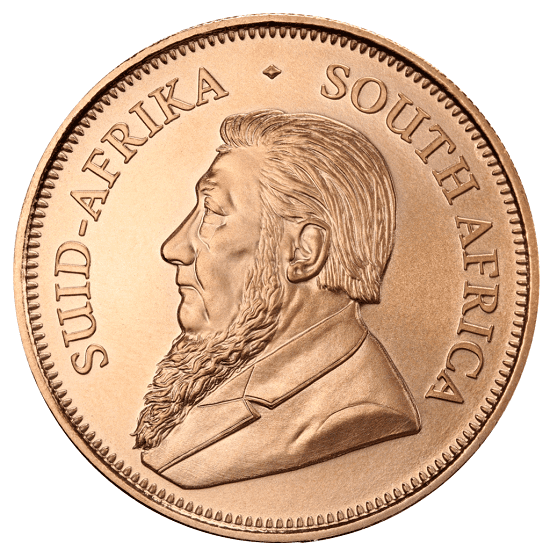
The obverse design, featuring the left-facing portrait of Paul Kruger, pays homage to the former President of the South African Republic. He presided over the Afrikaner South African Republic during the pivotal years of 1883 – 1900. Unlike other popular bullion coins, Kruger’s bust has remained on the coin’s obverse throughout modern times rather than be replaced by a current leader.
This portrayal by designed Otto Shultz adds a historical touch to each coin, commemorating Kruger’s influential role during a crucial period in the nation’s past. The consistency of the design reflects the coin’s essence, being named Krugerrand by combining Paul Kruger’s surname with the country’s currency, the Rand.
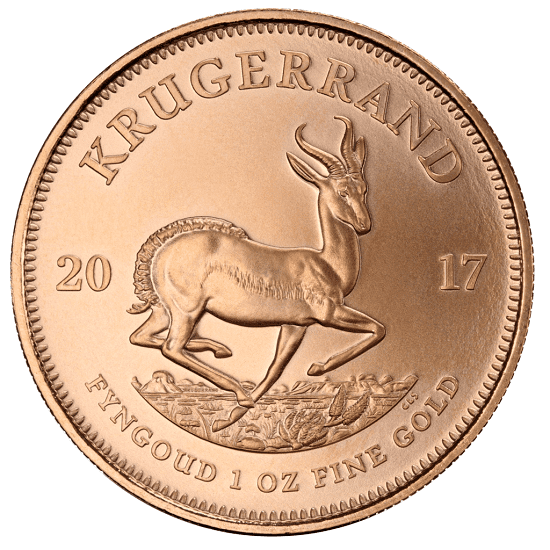
On the reverse side, the image of a springbok, a nimble and iconic African antelope, graces the Krugerrand. This design, created by renowned sculptor Coert Steynberg, symbolizes the nation’s diverse wildlife and has become synonymous with the coin. Over the years, the springbok’s representation has evolved subtly, reflecting changes in artistic interpretation while preserving the coin’s distinct identity.
As we explore the evolution of these designs, it becomes clear that the Krugerrand’s aesthetic choices not only encapsulate South Africa’s heritage but also contribute to the coin’s enduring popularity among collectors and investors.
Krugerrands are co-produced by the South African Mint and Rand Refinery in various forms to cater to diverse preferences and investment strategies. Understanding these types is key to making informed decisions in the world of precious metals.
The backbone of the Krugerrand family, standard Krugerrands, weigh one ounce and represent a straightforward investment in gold. These coins, containing precisely one troy ounce of gold, are the foundation of the Krugerrand legacy and remain a popular choice for investors seeking simplicity and value.
Introduced in 1980, fractional Krugerrands provide a flexible option for those looking to invest in smaller increments. Available in 1/2, 1/4, and 1/10 ounce sizes, these fractional gold coins make gold investment more accessible, allowing individuals to tailor their investments according to their budget and goals. It’s worth noting that fractional Krugerrands are also available as part of premium boxed full sets, often featuring the iconic 1-ounce coin alongside the smaller denominations.
Beyond the standard offerings, Krugerrands are produced annually in limited number proof finishes and occasionally as special editions and commemoratives. Notable examples include the 1984 Prestige Set, the 2008 40th Anniversary Set, and the 2017 Silver Krugerrand, each carrying unique designs and often commemorating significant events or anniversaries. Collectors find are attracted to these editions, as they not only hold intrinsic gold value but also carry additional historical or artistic significance, adding a layer of diversity to the Krugerrand family.
Free ultimate guide for keen gold investors
Understanding the technical details of Krugerrands is crucial for both collectors and investors. These technical details empower individuals to make informed decisions when it comes to acquiring, valuing, and appreciating Krugerrands in the realm of gold investment.
Krugerrands are minted with precision, adhering to standardized specifications. While the standard 1-ounce Krugerrand contains exactly one troy ounce of gold (31.104 grams), it actually weighs a total of 33.9305 grams. This difference is due to its composition of 22-karat gold, with a purity of 91.67% mixed with 8.33% copper. The gold content contributes 31.104 grams, while the copper alloy adds a further 2.8265g. The diameter of the coin is 32.77mm. These precise measurements ensure consistency in quality and value for investors and collectors alike.
While the front and back of Krugerrands boast iconic designs, the coin’s edge is not overlooked. The edges of Krugerrands may vary, featuring either a reeded or serrated design. These subtle variations add a touch of uniqueness to each coin, contributing to the overall aesthetic appeal. The number of serrations varies with each member of the Krugerrand family.
The following table displays the permitted size variation tolerances and edge serrations for each Krugerrand Variety.
Despite being primarily valued for their gold content, Krugerrands hold legal tender status in South Africa. The face value of these coins is symbolic, as it does not accurately reflect their market value. The denominations are 1 Rand for the 1-ounce coin, 50 cents for the 1/2-ounce, 25 cents for the 1/4-ounce, and 10 cents for the 1/10-ounce coin. However, unlike its peer group of leading global bullion coins, it does not explicitly denote these values on each coin.
Unlocking the mintage figures and key dates of Krugerrands is not only pivotal for collectors seeking to source particular years of issue, but also for investors to comprehend their investment’s supply-side dynamic. Let’s explore the historical production and significant dates associated with these iconic gold coins.
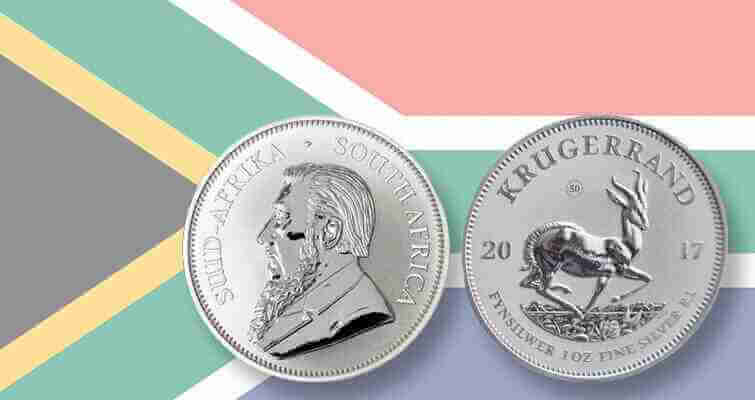
Krugerrand mintage figures have varied over time, influenced by factors such as market demand, economic conditions, and special releases. While production began in 1967, mintage figures really ramped up in the decade spanning the mid-1970s to mid-1980s. This aligned with the coin’s surging popularity which peaked in 1980s when it accounted for an incredible 90% of the gold coin market. This also explains the ubiquity of Krugerrands from this era when trading on the secondary market. Mintage figures have since fluctuated, with certain years witnessing increased production to meet growing global interest in gold investment.
Certain years stand out in the Krugerrand’s history due to limited production or special releases. Key dates often hold significance for collectors, as they may represent unique design variations or commemorate special occasions. Identifying these key dates allows collectors to prioritize specific coins for their rarity or historical value.
Beyond standard bullion coins, Krugerrands are also minted as proof coins and included in proof sets. Proof coins undergo a meticulous minting process, showcasing mirrored backgrounds and finely detailed designs. These coins are often issued in limited quantities and cater to collectors who appreciate the artistry and craftsmanship of numismatic pieces. Proof sets typically include various denominations, providing a comprehensive collection of Krugerrands in proof quality.
Mintage of the proof 1oz coins has occurred almost annually since the inaugural bullion launch in 1967, albeit it much smaller numbers than its bullion brother. Fractional Krugerrands and collectable sets began to be produced from the 1980s onwards as the product range expanded. Mintage figures for these elements are also far more modest than the classic 1oz bullion Kruger, reflecting their niche appeal.
The following mintage figures are based on a number of sources including the South African Mint. True mintage numbers are not 100% accurate as recording systems at Rand Refinery have evolved between production figures and mintage figures.
Investors and collectors seeking diversity in their precious metal portfolios can now turn to Silver Krugerrands. These coins, sharing the iconic design of their gold counterparts, offer a distinct avenue for those interested in silver investments. These coins, struck in one troy ounce of silver, maintain the classic design featuring Paul Kruger and the springbok. The silver variant provides a more accessible entry point for investors looking to benefit from the Krugerrand’s reputation and design in a silver format.
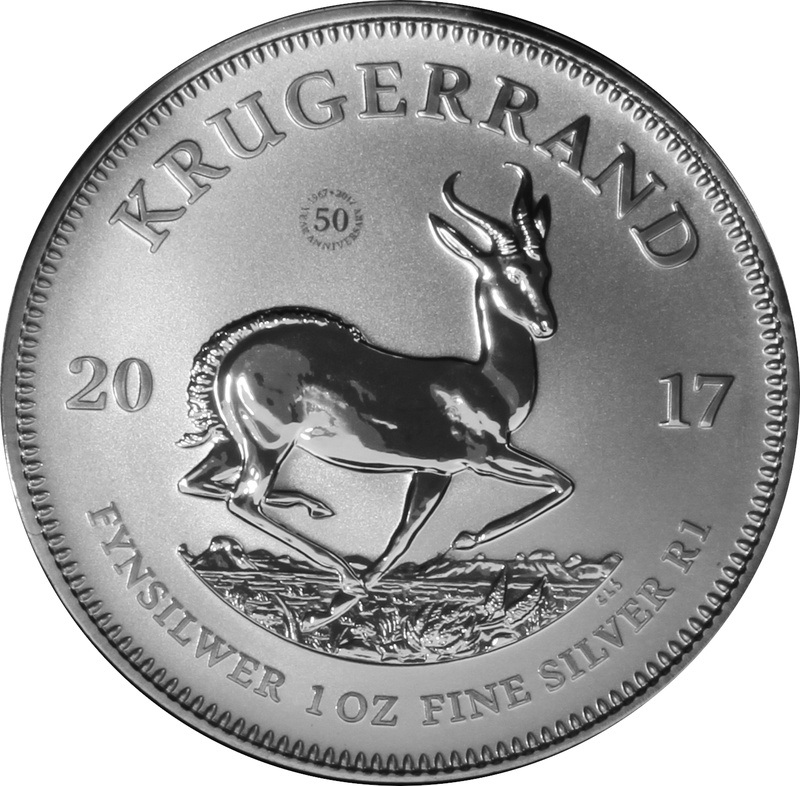
The only real surprise is how long it took The South African Mint to introduce Silver Krugerrands. While each of its peer group launched silver variants of their main bullion coins, the hitherto pioneering Krugerrand lagged behind. In the US, the 1oz Eagle bullion coin simultaneously launched in both gold and silver variants in 1986. The Canadian Mint took 9 years from launching its gold Maple Leaf coin in 1979 before diversifying into silver. Meanwhile the Royal Mint began minting a silver Britannia coin a decade after its 1987 gold coin began. But it was a full half a century since the first gold Krugerrand was minted that in 2017 the Krugerrand legacy was finally expanded into silver.
Silver Krugerrands, like their gold counterparts, adhere to precise specifications. Each coin contains one troy ounce of silver, boasting a purity of 99.9%. The coin’s diameter and design closely mirror the gold version, offering consistency for those familiar with the iconic Krugerrand aesthetic.
Silver Krugerrands cater to a broader audience due to their more affordable pricing compared to gold. The lower price point allows investors to acquire larger quantities of silver while still benefiting from the coin’s recognizable design and the intrinsic value associated with precious metals.
Investors and collectors alike appreciate Silver Krugerrands for their affordability, accessibility, and the opportunity they provide to diversify precious metal holdings beyond gold. But their last-to-market launch has left them way behind its competitors for market share.
For those looking to invest in precious metals, Krugerrands offer a reliable option, valued for their gold content, iconic design, and historical significance. Let’s explore the aspects that have made Krugerrands synonymous with gold coin investment.
Krugerrands are renowned for their simplicity and transparency as a gold investment. The coins are minted in various denominations, with the 1-ounce version being the most popular. Investors appreciate Krugerrands for their intrinsic gold value, making them a tangible and easily tradable asset in the world of precious metals. They’re perceived as a good-value, globally recognized and liquid choice for gold investors. This status stems from it being first-to-market in the 1960s and becoming the most highly produced gold coin in the following decade. The South African Mint will be satisfied that the coin’s reputation as being low cost has endured since its launch.
For those considering precious metal investments, Krugerrands stand out as a straightforward and historically significant option. But the price you pay to buy and sell Krugerrands plays a significant role in the success of your investment. A few key factors impact their prices. Being mindful of these influences enables investors to make informed decisions, balancing the appeal of Krugerrands as a tangible gold asset with the dynamics shaping their market prices.

The primary driver of Krugerrand prices is the overall state of the gold market. As a gold bullion coin, Krugerrands closely mirror the movements of the gold spot price. Investors need to monitor global economic conditions, geopolitical events, and inflationary pressures, as these factors impact gold prices and, consequently, the value of Krugerrands. Demand for gold as an asset will vary depending on market sentiment, inflation and interest rates.
Mintage figures play a crucial role in determining the value of Krugerrands. Limited editions or coins with lower mintage figures often carry a premium. Collectors value coins that are rarer, contributing to increased demand and higher prices. Understanding the historical mintage figures of specific Krugerrand releases allows investors to gauge their potential rarity and desirability.
The collectible appeal of Krugerrands is influenced by various factors, including historical significance, special editions, and unique design features. Commemorative releases or coins with distinct design variations can become sought-after by collectors. While the intrinsic gold value remains a primary consideration, the added appeal of collectibility can enhance a Krugerrand’s overall market value.
When comparing Krugerrands with other gold coins, it’s crucial to consider factors such as purity, design, and tax implications. In the UK, investors often lean towards Britannias due to their status as Capital Gains Tax (CGT) free. Britannias, with their intricate designs and tax advantages, present an attractive alternative for those looking to invest in gold without incurring CGT.
Investors should weigh the advantages of Krugerrands—known for their gold content and global recognition—against the specific tax considerations and design preferences associated with other gold coins like Britannias. Each gold coin type offers unique features, allowing investors to tailor their portfolios based on their financial goals and regional tax regulations.
Genuine Krugerrands adhere to specific weight and dimensional standards. Investors can use precise scales and calipers to verify these specifications, ensuring that the coin aligns with its designated size and weight. Don’t forget to refer to our size table in our earlier section which also details the acceptable variance permitted.
Testing the gold purity of a Krugerrand is essential. Authentic coins have a gold content of 22 karats (91.67%). Acid testing or electronic gold testers can help verify the coin’s purity, but the former method can leave an unsightly permanent mark, diminishing the coin’s value. The coin’s colour should have a reddish-yellow hue, demonstrating its gold/copper alloy.
Genuine Krugerrands boast intricate design details. Inspecting the fine lines, lettering, and the level of detail on the coin’s surface provides insights into its authenticity. Counterfeit coins often lack the precision found in authentic minting and can exhibit inconsistency across the coin. In particular examine the coin for any inconsistencies in Paul Kruger’s portrait or the springbok, which are the most common giveaways.
While Krugerrands minted from 1967 to 1980 don’t feature a hallmark or mint mark, the number of serrations around the coin’s edge need to match the specified amount for the coin size and finish. 1oz Proof Krugers feature 220 edge serrations, while its more common bullion cousin only has 160.
Coins produced from 1981 onwards should display a “c” or “s” mintmark under the Springbok image on the Krugerrand’s reverse.
Our automated portfolio builder will provide suggestions based on various investment objectives.
While Krugerrands are amongst the most readily available and liquid gold coins in the world, where, when, and how you choose to trade them can seriously impact your outcome. Navigating the buying and selling process of Krugerrands requires a practical understanding of the market to ensure that Krugerrands prove to be a great investment.
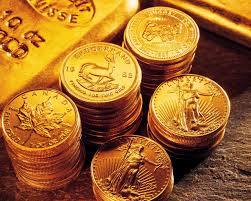
Reputable and authorized dealers are a secure option for purchasing Krugerrands. These dealers often provide a buyback guarantee and hold precious metals accreditations, ensuring the legitimacy of the coins.
Most established bullion dealers now provide online portals as a convenient way to buy Krugerrands and benefit from free insured delivery. This enables you to browse stock from the comfort of your own home and exploit price movements by executing transactions anytime 24/7. Ensure the seller has a positive reputation, provides clear information about the coins and transparent live pricing. Customer support and guidance should be available on the phone.
Local coin shops may carry Krugerrands, providing an opportunity for in-person transactions. Verify the shop’s reputation and inquire about the coin’s authenticity and any associated premiums. Prices may be higher than from large bullion dealers and availability more limited.

Before selling, research current gold prices to ensure you are aware of the market value of Krugerrands. Prices are influenced by the gold market, and staying informed ensures fair transactions by managing expectations.
Choose reputable buyers or dealers when selling Krugerrands. This minimizes the risk of encountering fraudulent transactions and ensures a smooth selling experience. Generally speaking, Krugerrands aren’t collectible coins so there’s no need to take risks by going down the private sale route. Krugers are desirable investment coins so you’ll have a large pool of bullion dealers prepared to buy them. Use this demand to shop around for the best price.
3.Consider Market Demand:
Be mindful of market demand when selling. Certain times or events may influence demand for Krugerrands, impacting their resale value. Timing your sale strategically can optimize returns. Selling when everyone else is buying can secure better prices for your sale. If you’re liable for Capital Gains Tax on your Krugerand profits, sell some before the tax year end on April 5th and some after to utilize tax-free thresholds optimally.
Buying and selling Krugerrands is a straightforward process when approached with diligence. Choosing reliable sources, staying informed about market trends, and adhering to best practices for selling contribute to a successful and secure experience.
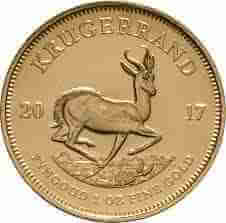
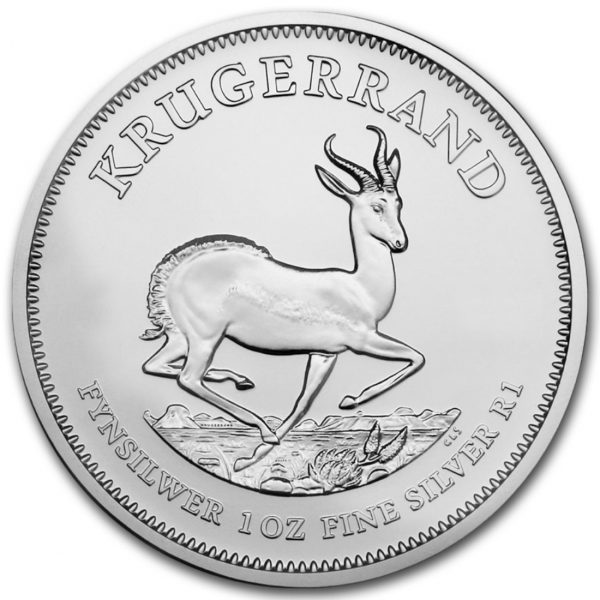
Investing in proper storage solutions and adopting careful handling practices contributes significantly to the longevity and condition of Krugerrands. Whether stored in a secure deposit box or at home, the goal is to maintain the coins’ value and aesthetic appeal for years to come.
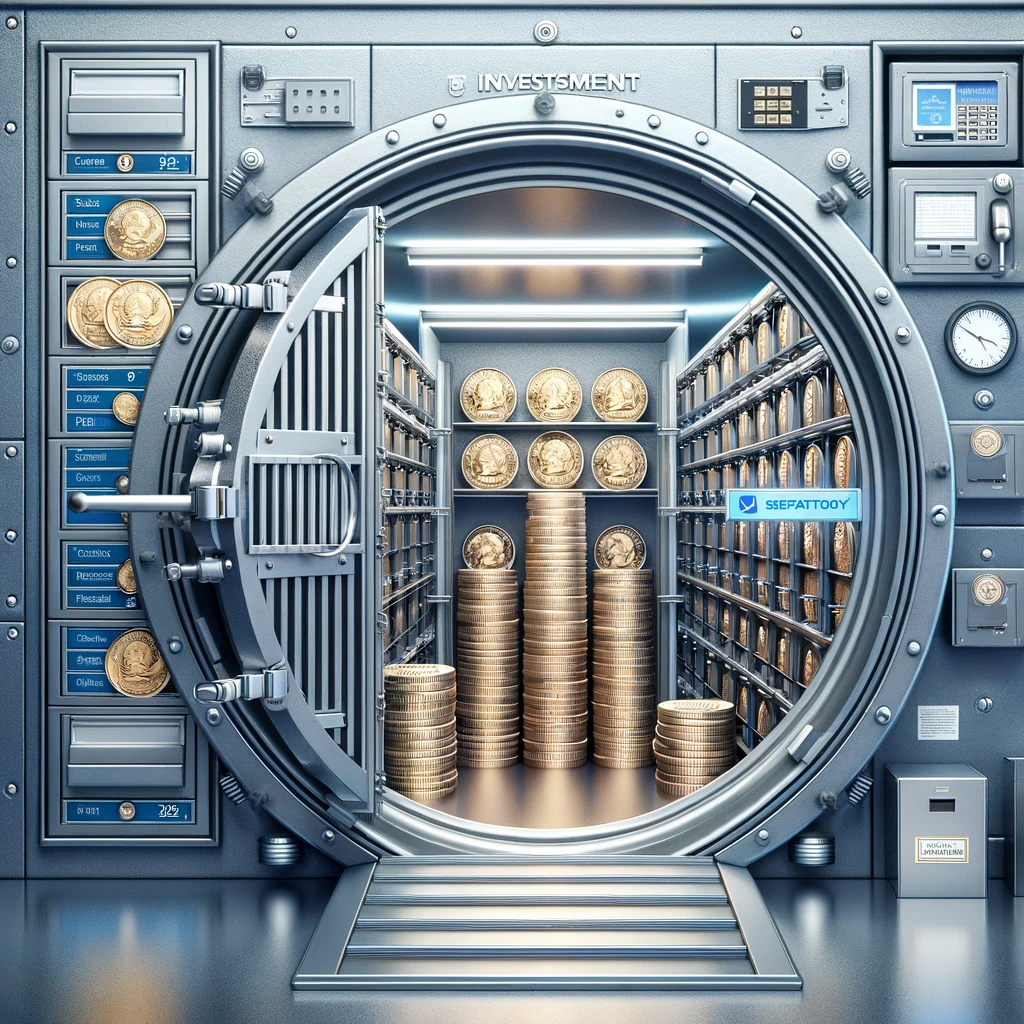
Utilizing a secure deposit box in a reputable bank or financial institution is a prudent choice. These boxes provide a controlled environment with limited access, reducing the risk of theft or damage. Access will be limited for bank boxes but usually 24/7 for private solutions. While a bank deposit box could be free of charge, realistically very few banks have any space left. 3rd party solutions are readily available but will cost an annual fee and may not be as conveniently located. Coins are uninsured from theft.
If storing Krugerrands at home, invest in a high-quality home safe that offers both fire and theft protection. Install the safe in a discreet and secure location, prioritizing confidentiality. Storage will only cost the one-off expense of purchasing the safe. Sometimes insurance cover can be added to home insurance policies depending on your provider. The main advantage of home storage is flexible access and the comfort of direct ownership.
For larger purchases, buying and storing your Krugerrands with a specialist bullion dealer is recommended. Coins can be stored in a controlled and professional environment, ensuring guaranteed security of your coins. Annual fees usually include full insurance cover too. This option is also convenient when considering your exit strategy. When it’s time to sell the coins, they already reside with the dealer so you don’t have to worry about transporting them.
With gold Krugerrands minted from 22 karat alloy, they’re designed to be handled and resilient to scratches. One of the benefits of physical gold investment is the enjoyment of handling the gold itself, so don’t let worries about damage prevent you from doing this. Instead, just handle with care and your coins should remain in tip-top condition for years to come.
Silver can be more susceptible to tarnishing which not only impacts their aesthetic appeal of the Krugers but may also impact their sale value. For this reason, we advise handling your silver Krugerrands less than gold ones, to ensure you maintain their optimum condition.
Inevitably your Krugerrands can accumulate dirt which you may wish to try and remove. Alternatively, you may buy pre-owned gold Krugerrands which are decades old and could do with a spruce up. Refrain from using cleaning agents or abrasive materials on Krugerrands. Their delicate surfaces can be easily scratched. Instead, gently wipe the coins with a soft, lint-free cloth if cleaning is necessary. Coins can be soaked in warm soapy water to provide a delicate clean.
Krugerrands are considered a reliable gold investment due to their bullion content, historical significance, and global recognition. Their value tracks the live gold market, making them a popular choice for investors seeking exposure to precious metals.
A standard Krugerrand contains one troy ounce of gold, equivalent to approximately 31.1035 grams. The coin’s weight and gold purity (22 karats) contribute to its intrinsic value as a gold bullion investment.
The cost of a Krugerrand is determined by the current market price of gold, often with a premium of between 5% and 8% to cover production and distribution expenses. Prices fluctuate based on live gold market conditions and may vary among dealers.
The first Krugerrand gold coin was minted in 1967 by the South African Mint. This coin holds historical significance as the world’s first modern bullion coin, designed to facilitate private ownership of gold.
Yes, Krugerrands have legal tender status in South Africa. However, their primary value lies in their gold content, and they are rarely used for day-to-day transactions. Investors and collectors typically value Krugerrands for their precious metal content and collectibility rather than their face value.
Krugerrand is a gold bullion coin first minted in 1967 in South Africa, known for its iconic design featuring Paul Kruger and a springbok.
The value of a Krugerrand is influenced by the current gold market, with prices fluctuating based on gold’s live market value.
Krugerrands can be purchased from authorized dealers, online platforms, and local coin shops, ensuring authenticity and reliability.
Sell Krugerrands to reputable buyers, considering current gold prices, market demand, and choosing trustworthy dealers.
Safely store Krugerrands in secure deposit boxes, home safes, or with insurance coverage, minimizing handling and avoiding cleaning agents.
Krugerrand prices are influenced by gold market conditions, mintage figures, and collectibility, affecting their overall market value.
Yes, Krugerrands come in standard, fractional, and special editions, each catering to diverse preferences and collector interests. The common 1oz gold Krugerrand is produced in a bullion or proof finish. A silver Krugerrand was launched in 2017, 50 years after the first gold coin.
Yes, fractional Krugerrands, such as 1/10 or 1/4 ounce, provide flexibility for investors seeking smaller denominations. These smaller coins will cost a higher premium than the standard 1oz gold coins and can be bought as part of a 4-coin boxed set.
While Krugerrands are tax free for South African residents, tax implications vary by location. In some countries, Krugerrands may be subject to capital gains tax; it’s essential to understand local regulations.
Authenticate Krugerrands by verifying weight, dimensions, gold purity, and design details. Authorized dealers and reputable sources enhance authenticity.
Krugerrands have proudly maintained their position as the world’s best known gold coin, recognized for their historical importance, intrinsic value, and global appeal. Whether considered as a tangible asset in a diversified portfolio or appreciated for their iconic design, these gold coins continue to play a significant role in the world of precious metal investments.
Live Gold Spot Price in Sterling. Gold is one of the densest of all metals. It is a good conductor of heat and electricity. It is also soft and the most malleable and ductile of the elements; an ounce (31.1 grams; gold is weighed in troy ounces) can be beaten out to 187 square feet (about 17 square metres) in extremely thin sheets called gold leaf.
Live Silver Spot Price in Sterling. Silver (Ag), chemical element, a white lustrous metal valued for its decorative beauty and electrical conductivity. Silver is located in Group 11 (Ib) and Period 5 of the periodic table, between copper (Period 4) and gold (Period 6), and its physical and chemical properties are intermediate between those two metals.